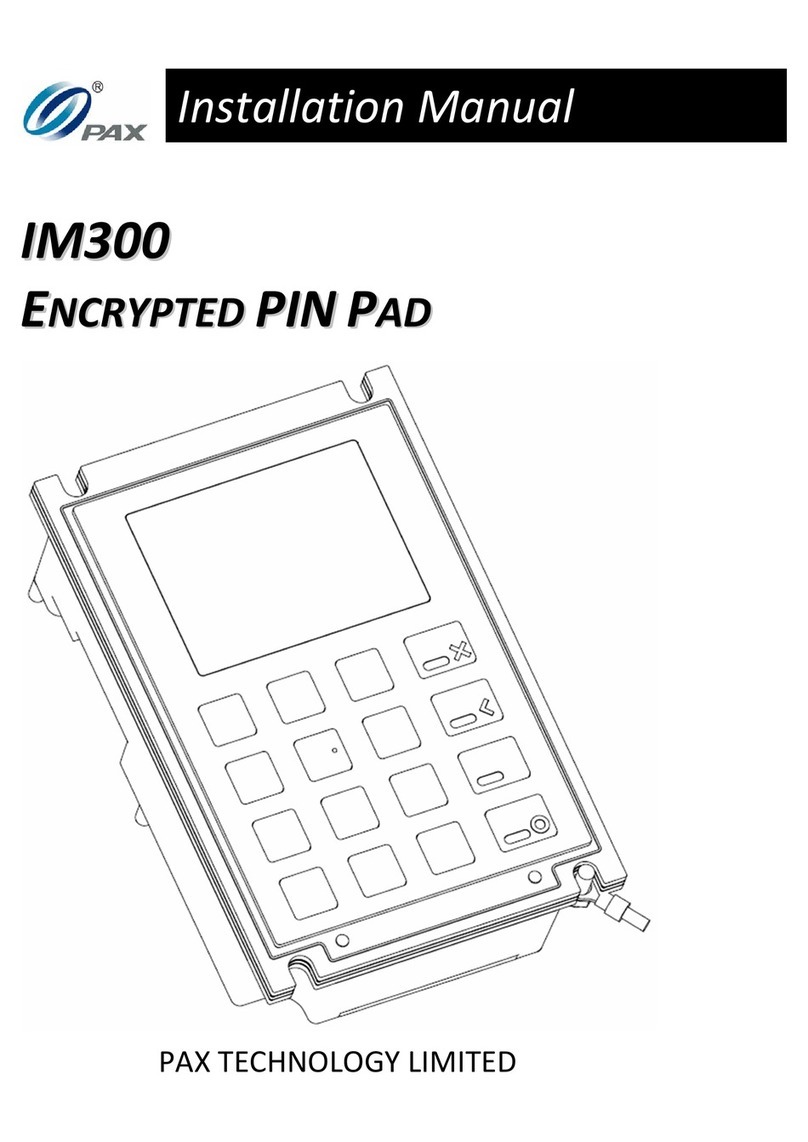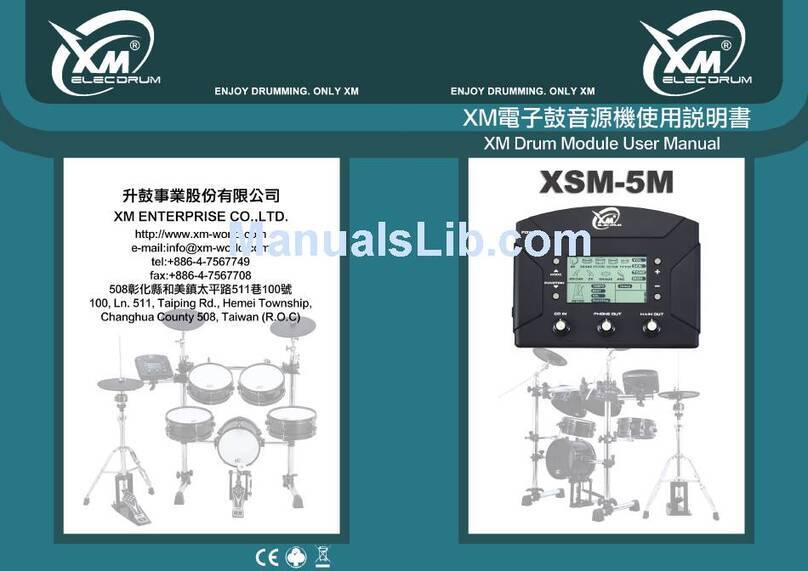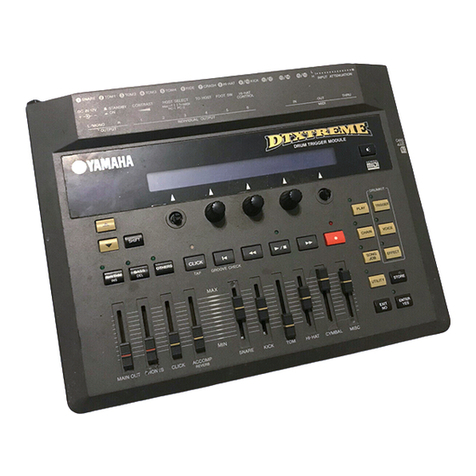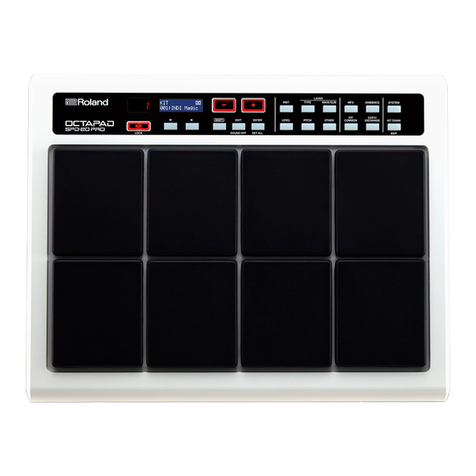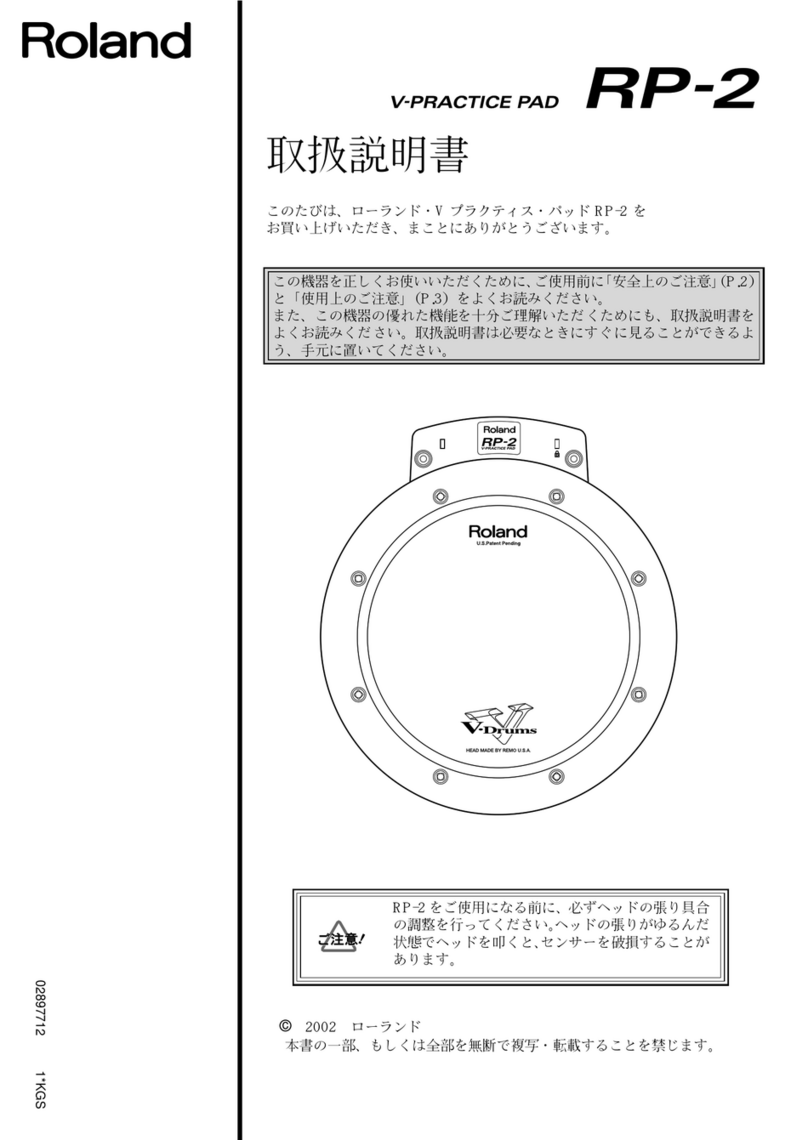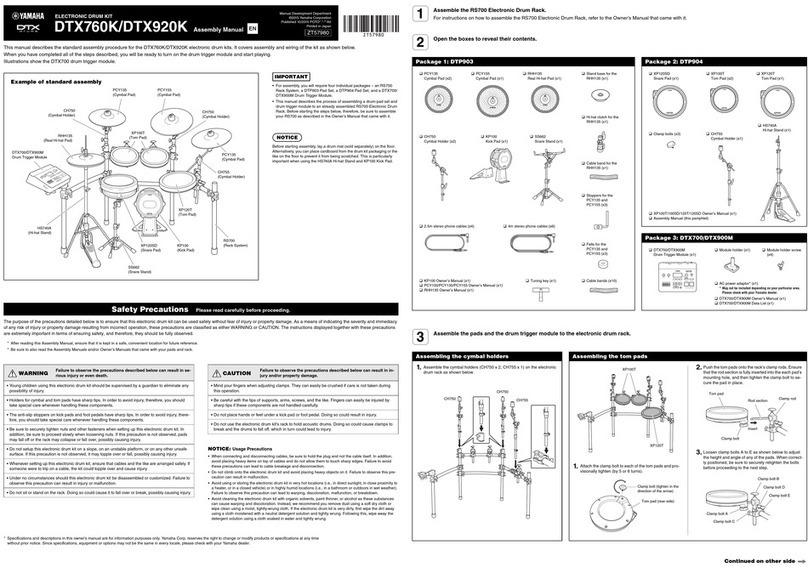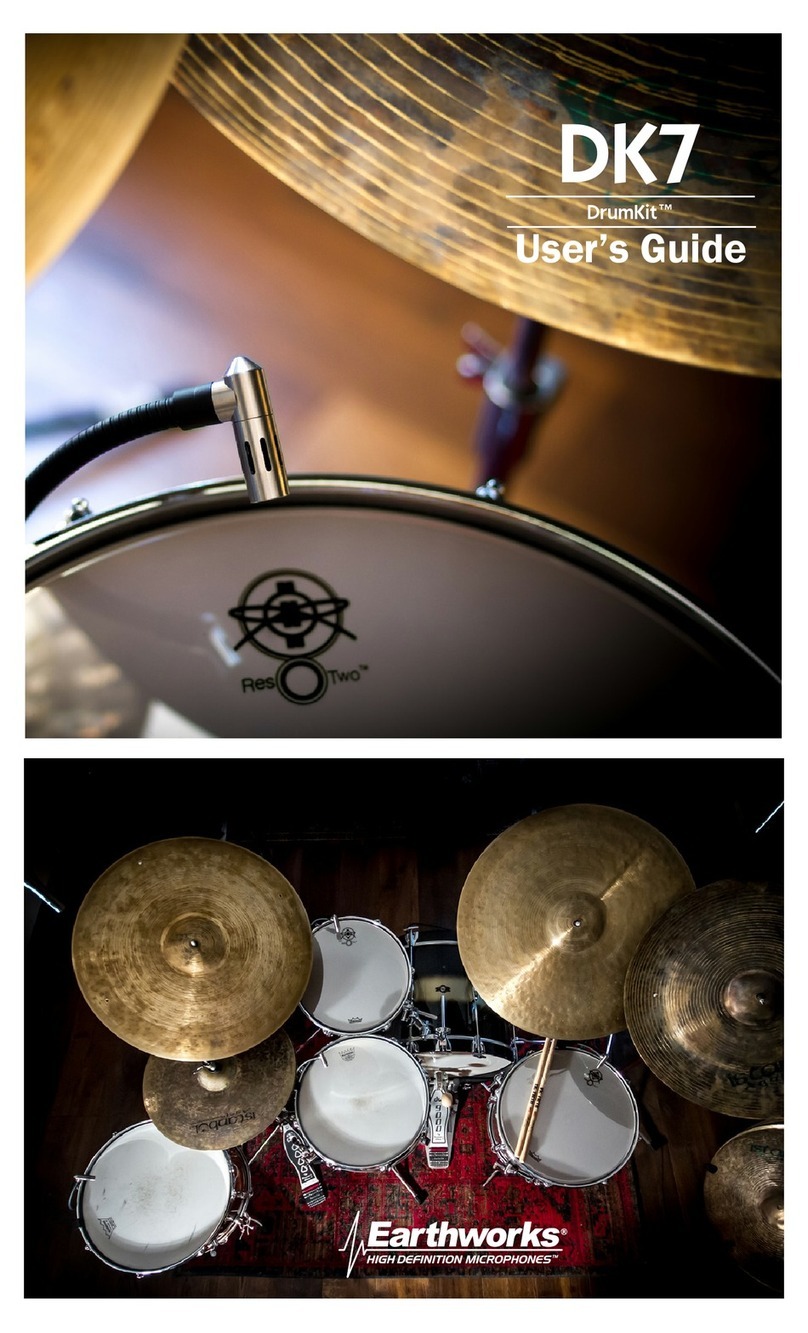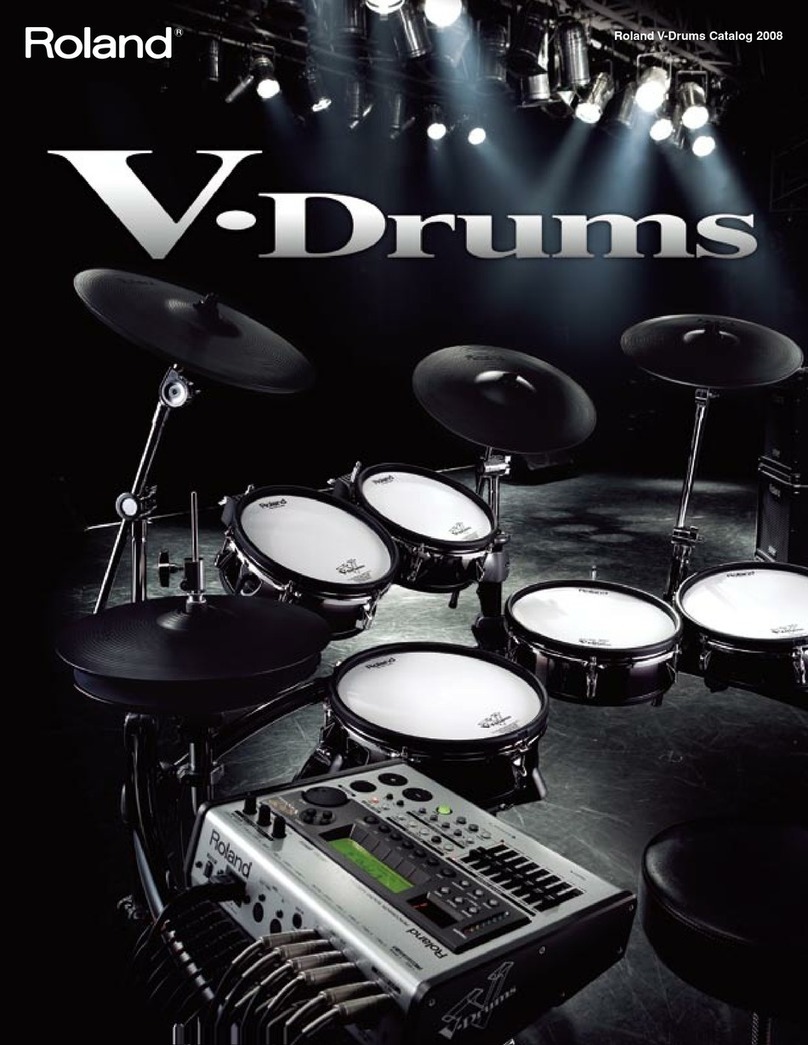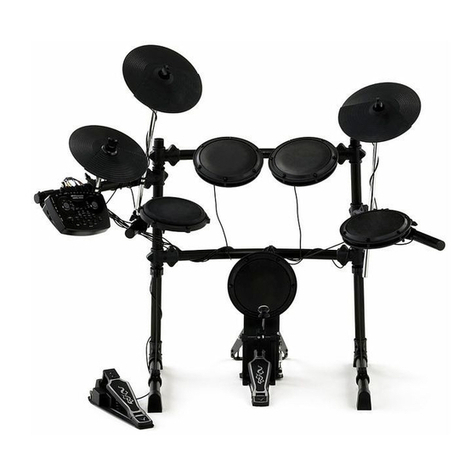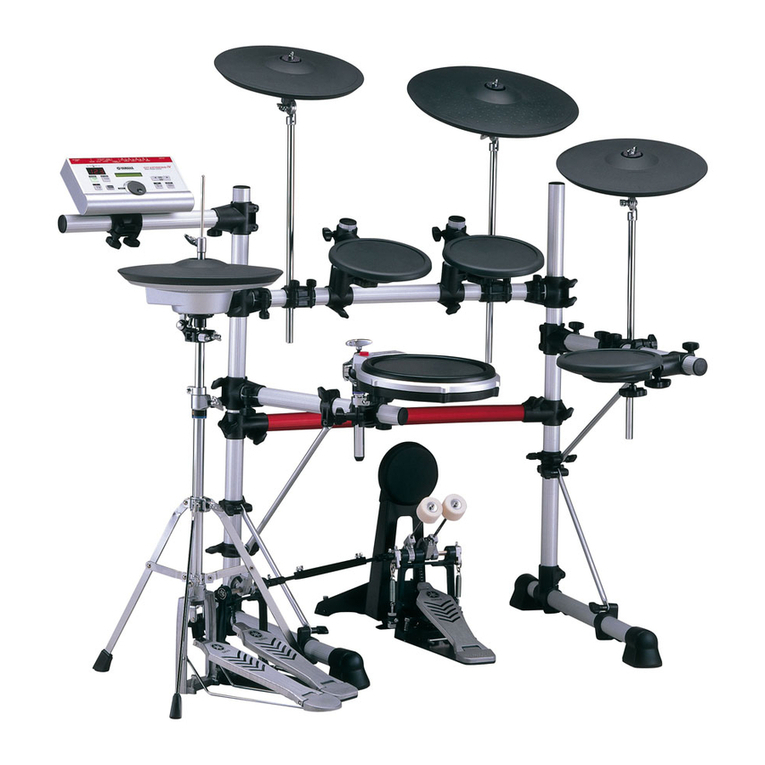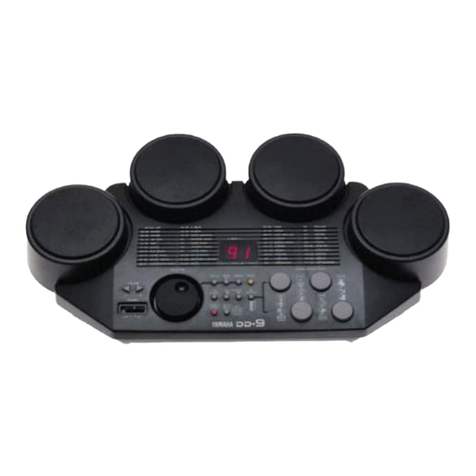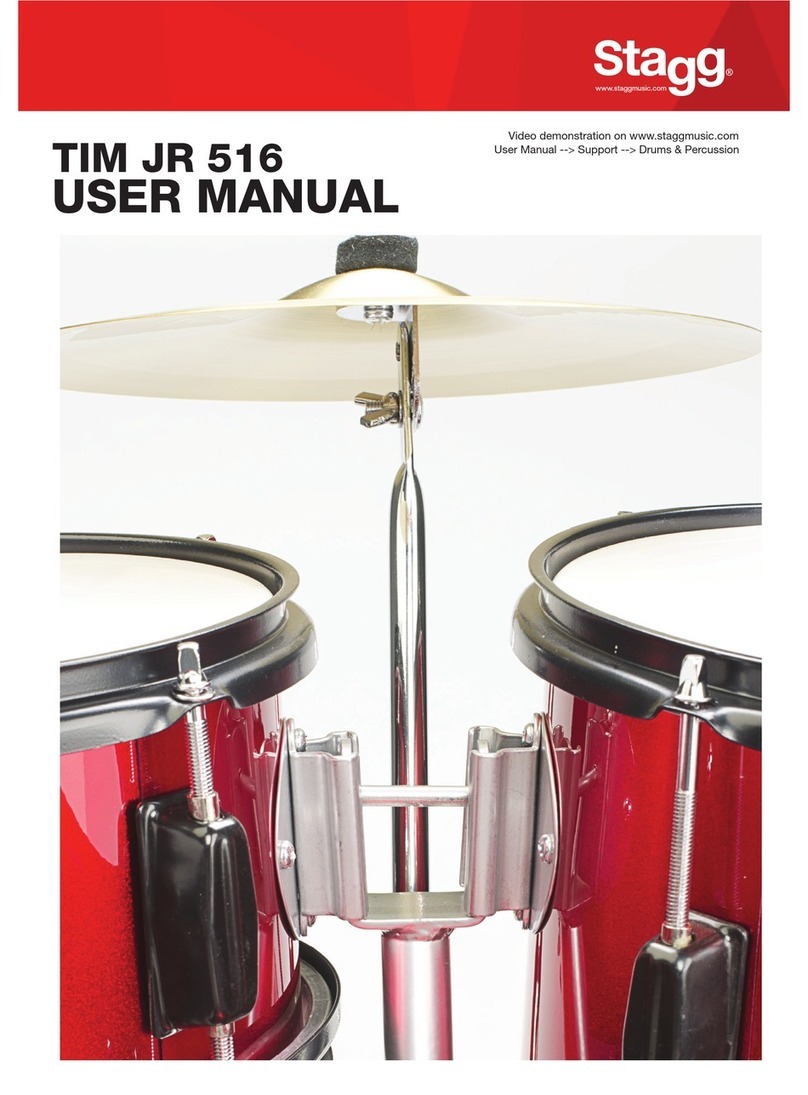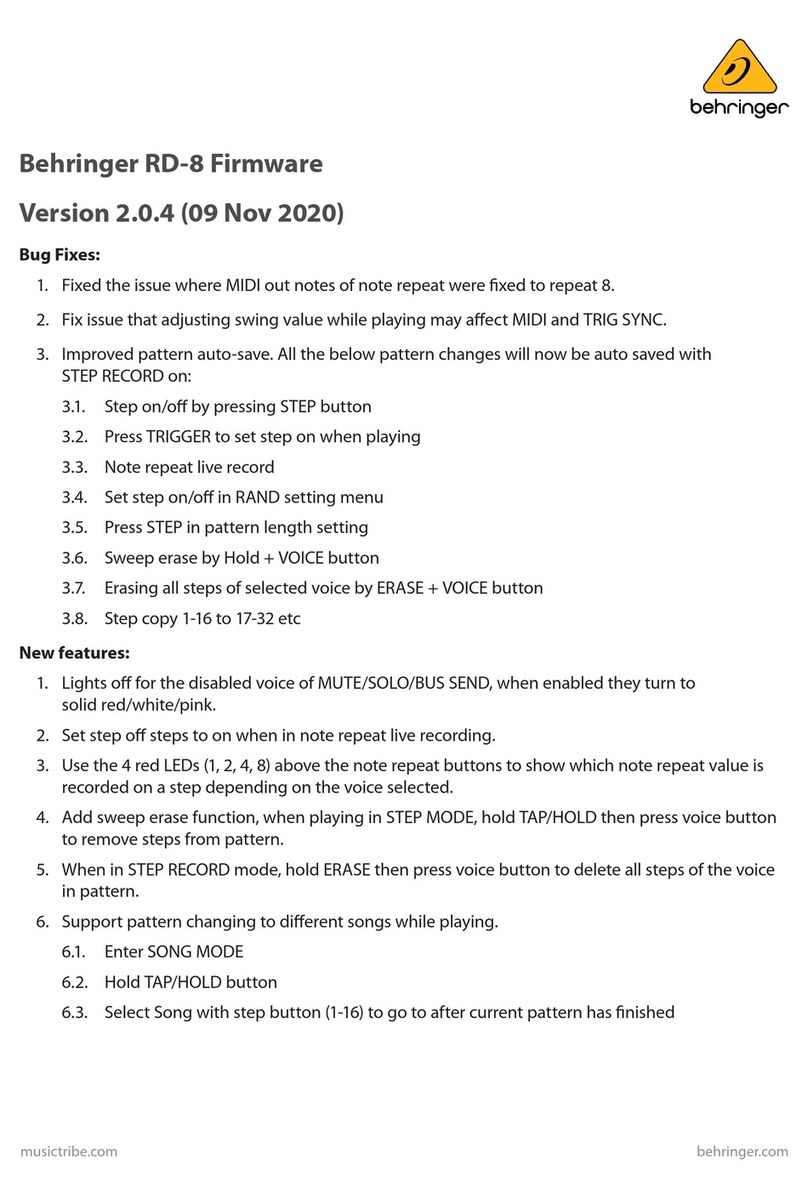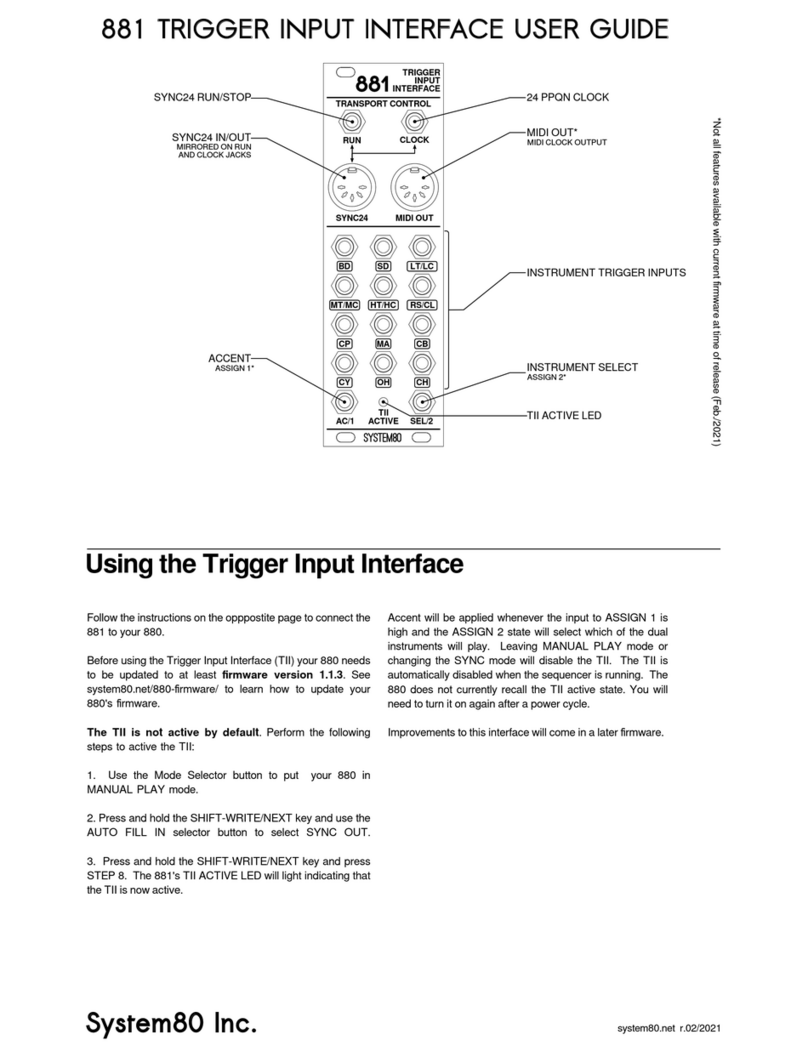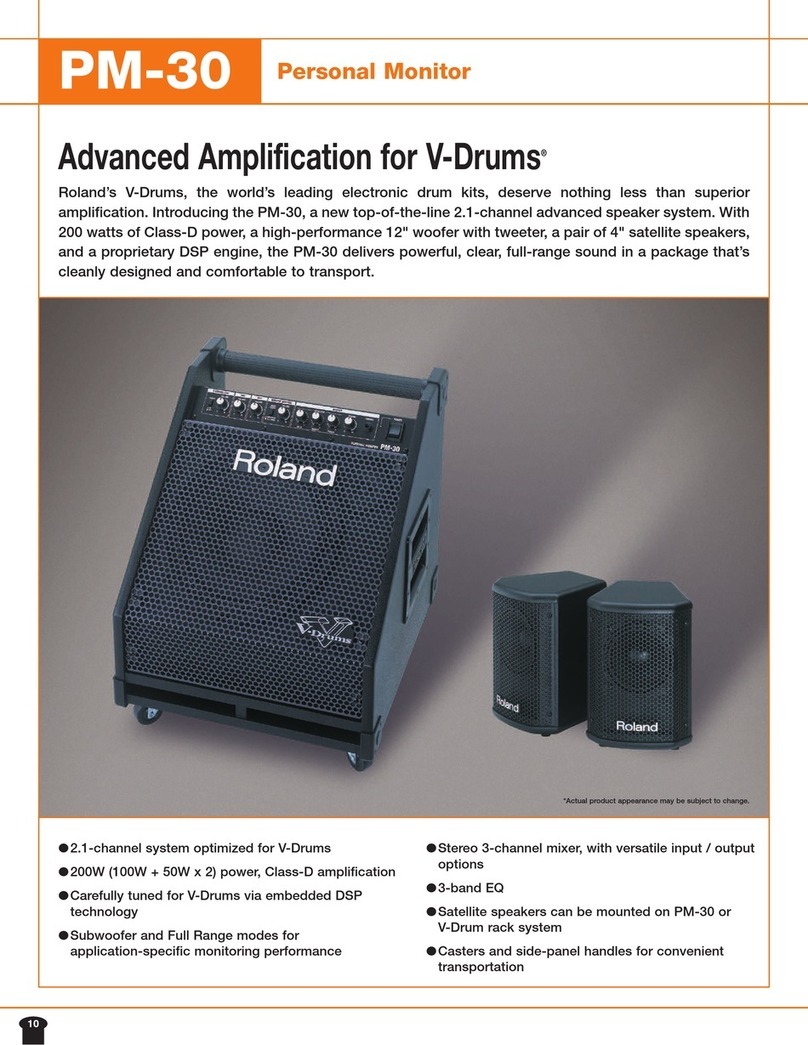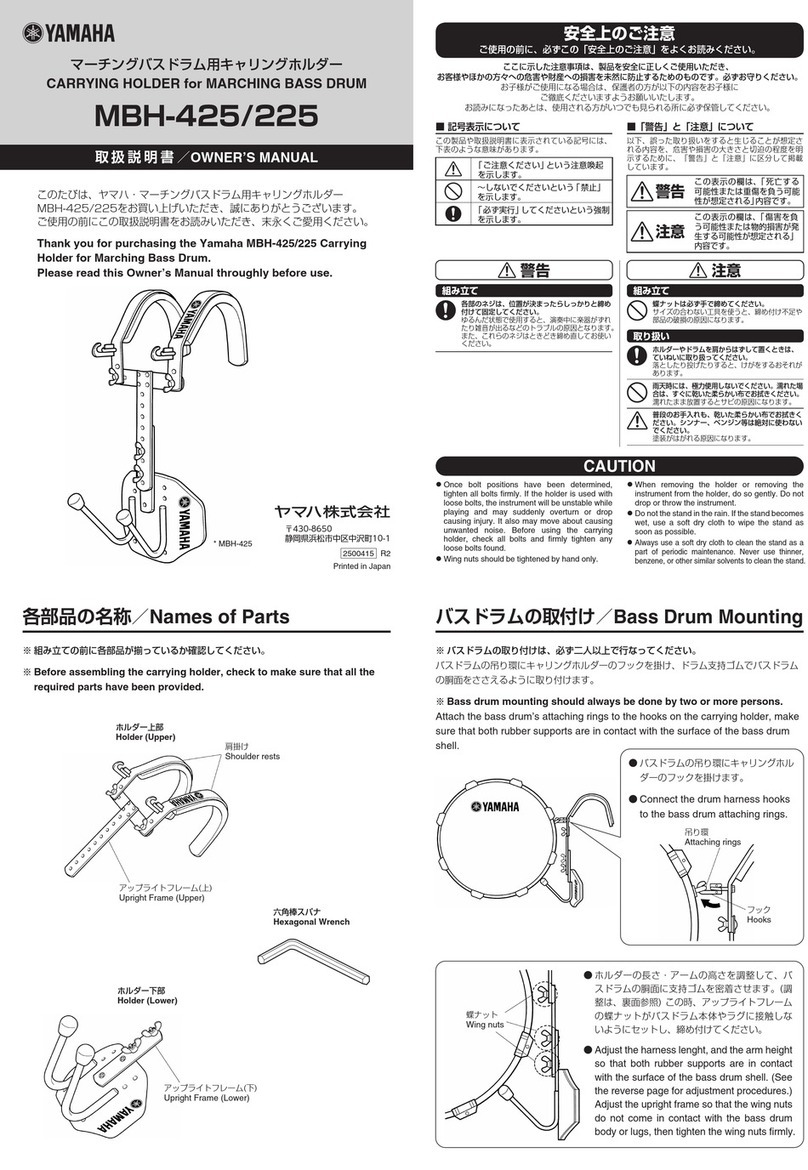MadLab FUNKY DRUMMER User manual

FUNKY DRUMMER
Funky Drummer has the following features:
•40 drum sounds (see Table 1)
•4 touch pads
•12 preset rhythms (see Table 2)
•4 user rhythms (non-volatile)
Construction
First fit and solder the resistors (R1 to R15) and trim their legs. Identify the resistors by the coloured stripes
on the body.
Next fit the chip sockets (IC1 and IC2) matching the notch in the socket against the notch in the symbol on
the board. Care should be taken when soldering these components to avoid solder bridges between the pins.
It is not recommended that the chips are soldered directly to the board.
Fit and solder the capacitors, paying attention to the polarity of the electrolytics (C1, C2, C3 and C8)
(negative is marked by a stripe on the side of the body). The tantalum capacitor (C6) should be fitted such
that the shorter leg is by the minus sign. The ceramic capacitors (C4, C5 and C9) and the polyester capacitor
(C7) can be fitted either way around.
Bend the legs of the regulator (REG) at right angles and solder it such that the metal heatsink is flat on the
board and the side with the writing is facing upwards. Solder the LED matching the shorter leg (also flat on
the rim) to the hole with the line.
Solder the pushbuttons (S1 to S6).
Solder the light-dependent resistors (LDR1 to LDR4). Be careful with these components as excessive heat
can melt the plastic.
Solder the transistor (TR1) matching the shape to the symbol on the board.
Solder the jack socket (AUDIO), first cutting off the five small plastic lugs on the underside so it fits flush on
the board.
Solder the power socket (POWER). Optionally also fit the PP3 battery snap (BATTERY). Support holes are
drilled on the board for the battery snap leads. Feed the leads up through the support holes from the track
side of the board and then down the solder holes. Red is positive and black is negative.
Don't fit the chips into their sockets until you have thoroughly checked your construction. Check that all the
components have been inserted correctly and that there are no dry joints and no solder bridges between pins.
Then match the small notch in each chip to the notch in its socket.
Attach rubber feet to the corners of the board.
Either connect a mains power supply (5-9V regulated dc, 300mA, centre +) to the power socket, or 4 AA
cells to the battery snap.
The software includes a power-on self-test. The LED should flash twice if the board is functioning correctly.
Connect headphones or powered speakers (with a 3.5mm jack plug) to the audio output socket.
Tap the touch pads (LDRs) and you should hear different drum sounds.
1

How to Use
A particular drum sound can be associated with each of the four touch pads. Pressing the associated
pushbutton (S1 to S4) selects a touch pad (LDR1 to LDR4) to change. Then pressing the +or –pushbuttons
selects a particular drum, stepping forwards or backwards through the 40 available drum sounds. Finally
pressing the same pushbutton again fixes the association.
Pressing CONTROL + VOLUME increases the volume, SHIFT + VOLUME decreases the volume.
Pressing CONTROL + SHIFT + VOLUME toggles gain x 2 (double output voltage).
Settings are saved to non-volatile memory. CONTROL + SHIFT + RESET restores all settings to the factory
defaults. Note that user rhythms are not restored though.
Funky Drummer can output an audio signal on its jack socket which has a maximum peak-to-peak of about 2
volts. This is more than capable of producing a loud sound in a pair of 32-ohm impedance headphones.
The sensitivity of the touch pads can be adjusted by pressing and holding down one of the pushbuttons
during power up (until the self-test has completed). Six settings are available and are suitable for different
ambient light levels.
Rhythm Mode
Pressing CONTROL + RHYTHM plays the current rhythm or selects the next rhythm if a rhythm is already
playing. Pressing SHIFT + RHYTHM plays the current rhythm or selects the previous rhythm if a rhythm is
already playing. 12 preset rhythms and 4 user rhythms are available.
The LED flashes at the start of the rhythm loop. Pressing any pad pushbutton (S1 to S4) stops the rhythm
playing.
CONTROL + TEMPO increases the rhythm tempo (with auto repeat), SHIFT + TEMPO decreases the tempo
(with auto repeat).
CONTROL + SHIFT + DEMO plays all the preset rhythms in turn. Any pad pushbutton (S1 to S4) exits demo
mode.
Record Mode
CONTROL or SHIFT + RECORD selects record mode and allows the user rhythms to be edited.
The LED flashes at the start of the rhythm loop and a metronome click sounds on each beat of 4 beats.
The touch pads record drum sounds at the current point in the rhythm loop.
Recording is at one quarter speed, and a maximum of 64 drums events per beat can be recorded.
Pressing one of the pad pushbuttons (S1 to S4) exits record mode and stores the rhythm as one of the 4 user
rhythms.
2

Table 1 - drums
closed hihat open hihat high tom #1 high tom #2 high tom #3
low tom #1 low tom #2 snare #1 snare #2 snare #3
snare #4 bass #1 bass #2 bass #3 high conga
low conga high bongo low bongo high agogo low agogo
crash cymbal taiko timpani timbale china cymbal
cabasa brush #1 brush #2 snap clap
cowbell triangle gunshot scratch whistle
kalimba rimshot chicken bubble quijada
Table 2 - rhythms
8beat #1 8beat #2 8beat #3 8beat #4
jazz shuffle reggae samba
disco #1 disco #2 elec pop pattern #1
user #1 user #2 user #3 user #4
3

Component List
Resistors
R1, R10, R15 0R (black)
R2, R3, R9 10k (brown, black, orange, gold)
R4 100R (brown, black, brown, gold)
R5 470R (yellow, purple, brown, gold)
R6 47R (yellow, purple, black, gold)
R7 150R (brown, green, brown, gold)
R8 1R (brown, black, gold, gold)
R11, R12, R13, R14 150k (brown, green, yellow, gold)
Capacitors
C1 10uF electrolytic (blue or black)
C2 100uF electrolytic (blue or black)
C3, C8 220uF electrolytic (blue or black)
C4, C5, C9 100nF ceramic (brown, marked ‘104’)
C6 10uF tantalum (yellow/brown, beaded)
C7 100nF polyester (yellow or blue, square)
Semiconductors
TR1 ZTX689B transistor (black)
REG LD1117V33 LDO 3.3V 0.8A regulator (black/silver)
LED red
IC1 MCP4921 12-bit DAC + 8-pin socket
IC2 dsPIC33FJ128GP802 microcontroller (BB3X) + 28-pin socket
Miscellaneous
LDR1 - LDR4 miniature light-dependent resistor
S1 - S6 miniature tactile pushbutton
AUDIO 3.5mm jack socket
BATTERY PP3 moulded battery snap + 4 x AA battery box
POWER 2.1mm dc power socket
PCB
Self-adhesive rubber feet x 4
Design and documentation © MadLab Ltd. 2012
4
Other MadLab Drum manuals

